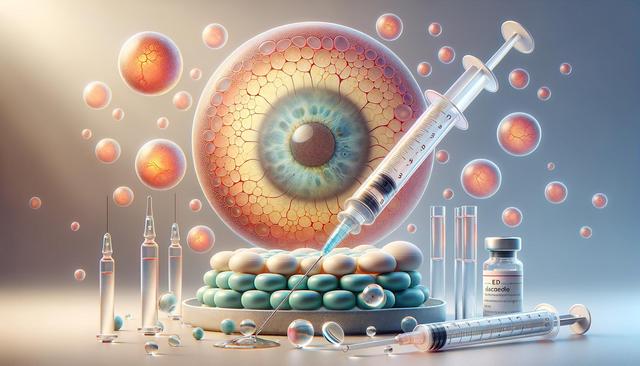What is Macular Degeneration?
Macular degeneration, particularly age-related macular degeneration (AMD), is a progressive eye condition that affects the central part of the retina called the macula. This area is crucial for sharp, central vision, which is necessary for activities such as reading, driving, and recognizing faces. AMD is one of the leading causes of vision impairment in older adults. There are two primary types: dry AMD and wet AMD. While dry AMD progresses slowly and involves gradual thinning of the macula, wet AMD is more severe and involves the growth of abnormal blood vessels that leak fluid or blood, damaging the macula more rapidly.
Understanding the type of AMD is essential in determining the appropriate treatment. For wet AMD, macular degeneration injections have become a standard and effective method to slow down the progression of vision loss. These injections are not a cure, but they can help preserve vision and in some cases, improve it to a certain extent.
How Do Macular Degeneration Injections Work?
The injections used to treat wet AMD typically involve medications known as anti-VEGF (vascular endothelial growth factor) agents. VEGF is a protein that promotes the growth of abnormal blood vessels in the retina, which can leak and cause damage. Anti-VEGF injections work by blocking this protein, thereby preventing further blood vessel growth and leakage.
Here’s how the treatment process generally works:
- The patient undergoes a comprehensive eye examination to confirm the diagnosis of wet AMD.
- An anesthetic eye drop is applied to numb the eye before the injection.
- The anti-VEGF medication is injected directly into the vitreous of the eye (the gel-like substance inside the eye).
- Patients are usually monitored regularly to assess the response to treatment and determine the need for future injections.
Commonly used anti-VEGF drugs vary, and the frequency of injections can range from monthly to less frequent intervals depending on the patient’s response and the specific treatment plan.
Benefits and Limitations of Injections
Macular degeneration injections have significantly changed the outlook for individuals diagnosed with wet AMD. They have helped many people maintain functional vision and continue their daily activities with less disruption. Some of the key benefits include:
- Slowing or halting the progression of vision loss
- In some cases, partial restoration of lost vision
- Reducing fluid buildup in the retina
However, there are also limitations to consider. These injections do not cure AMD, and they are not effective for dry AMD. Additionally, treatment often requires ongoing visits and injections, which can be burdensome for some patients. Side effects, although uncommon, may include eye discomfort, redness, and in rare cases, infection or increased eye pressure.
Understanding both the potential benefits and drawbacks allows patients and caregivers to make informed decisions about AMD treatment options.
Frequency and Duration of Treatment
One of the most common questions patients have is how often macular degeneration injections are needed. The answer varies based on individual response, the type of medication used, and the severity of the condition. Initially, patients may require monthly injections to stabilize the disease. Over time, if the condition improves or remains stable, the frequency may be reduced to every two or three months or even less frequently.
Long-term management often involves a tailored treatment plan that includes:
- Ongoing monitoring through visual acuity tests and imaging
- Adjustments to injection frequency based on disease activity
- Coordination with other eye care treatments or lifestyle changes
It is essential for patients to attend all scheduled appointments and communicate any changes in vision to their eye care provider. Skipping injections or delaying treatment can lead to a rapid decline in vision quality.
Living with Macular Degeneration
Receiving a diagnosis of macular degeneration can be challenging, but with proper management, many individuals are able to maintain an active and fulfilling lifestyle. In addition to injections, patients may benefit from other supportive strategies such as:
- Using magnifying aids and improved lighting
- Making home modifications to enhance safety and ease of navigation
- Participating in low vision rehabilitation programs
- Eating a nutrient-rich diet that supports eye health
Support from family, friends, and healthcare professionals is crucial. Educational resources and support groups can also provide encouragement and practical tips. Emotional adjustment is an important part of managing a chronic condition, and many individuals find it helpful to talk to counselors or join peer-led support networks.


